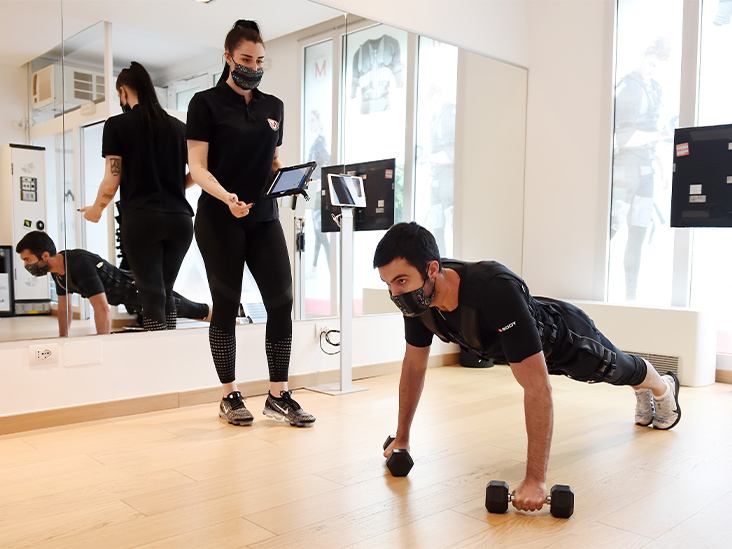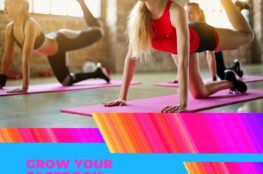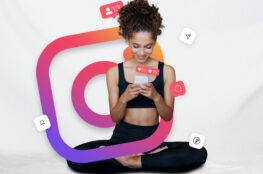After a year like 2020, what can fitness studios and gyms expect in 2021? Are consumers habits changing and if so how can you adapt to position your business for growth?
We’ve done the research to give your business the best chance to thrive in the new year. Here’s what we have learned.
What do we know?
Epidemiologists agree that COVID-19 will still be with us in 2021. This means that the fitness industry, even after the radical changes of 2020, will continue to face demanding challenges.
What about a vaccine?
With positive results starting to come out from advanced COVID-19 vaccine trials, many pinned their hopes on having a vaccine by end of 2020. Realistically, it could be months (at the very least) before a vaccine is approved and rolled out. Even once a vaccine is available, who gets access to it and how effective it is in the general population remains largely unknown.
Leading epidemiologists also agree that vaccines are not a magic cure, but rather another tool in our kit to help fight the spread of COVID-19. Therefore fitness studios and gyms should expect to live with COVID-19 in 2021 and plan accordingly.

Living with COVID-19
Learning to live with coronavirus circulating in the community will look different depending on who and where you are. The elderly and immunocompromised are more at risk of developing severe symptoms than younger, healthier people.
The pandemic’s course in 2021 will depend on the arrival of a vaccine. Also on how long the immune system remains protective after vaccination or recovery from infection. Many vaccines provide protection for decades — such as those against measles and polio — whereas others, including whooping cough and influenza, wear off over time and require repeated doses.
If you live in a country where coronavirus has been successfully eliminated or severely suppressed, you might be going about your life as normal. For others, contracting COVID-19 is a risk they face every day simply by meeting a friend for lunch, going to work or doing the grocery shopping.
What we have learned from COVID-19 is that there are measures we can take to help reduce the transmission of the virus. Practicing these measures can help our communities stay healthy even if COVID-19 is not a risk. An additional bonus is that following these increased hygiene protocols can prevent transmission of other viruses, such as the flu!
“The total incidence of SARS-CoV-2 through 2025 will depend crucially on this duration of immunity”
Wrote Grad, Harvard epidemiologist Marc Lipsitch and colleagues in a May paper exploring possible scenarios (see ‘What happens next?’).
Face masks
Fitted face masks are one of the most affordable and accessible tools we have to help prevent the spread of coronavirus. In many places masks will need to be worn for the foreseeable future, especially indoors and in places where social distancing is not possible.
Wearing a mask can be challenging (and possibly even pose a risk to your health) while performing intensive workouts. However they should be worn wherever possible, particularly if joining an indoor group class.
Advice from the World Health Organization (WHO) is to make wearing a mask a normal part of being around other people. Ensure that you and your clients are using masks properly (chin warmers do nothing to prevent the spread!)

Social distancing
The WHO recommends people maintain at least a 1-metre distance between each other to reduce the risk of infection from coughing, sneezing or speaking. They also advise maintaining an even greater distance between yourself and others when indoors. The further away, the better.
Gyms and fitness studios should adhere to their local government social distancing regulations. This means limiting the number of people who can enter a studio space, and ensuring fitness equipment is adequately spaced out.
Hygiene
Fitness studios and gyms must also continue to expect to provide and promote strict hygiene protocols in 2021. These include hand sanitizing, regular cleaning of spaces and equipment, and helping to reduce the spread of the virus.
Creating a hygienic and safe space for indoor exercising should be at the top of every fitness studio and gyms’ list in 2021.
Online bookings
Contact tracing is a process of gathering information about the people who someone with coronavirus (COVID-19) has had contact with, and locations the person has been when they were infectious. It is a critical part of global efforts to slow the spread of coronavirus.
To assist authorities with contact tracing, studios and gyms should have the contact details of all their members along with when they attended classes or where present in the building. The easiest way to do this is by using an online booking system.
Booking systems also help manage the flow of members through a gym or studio by requiring people to have a booking before attending. This is an important component to help studios and gyms enforce safe social distancing.
Ensuring your fitness studio or gym has a booking system will be more important than ever in 2021 and expected by clients.

Fitness studios and gyms can expect lockdowns in 2021
While each country navigates its own response to COVID-19, one method to help suppress and even eliminate COVID-19 is the use of lockdowns.
Governments use lockdowns to prevent movement in the community which helps prevent the spread of the virus. Unfortunately lockdowns require the shutting down of local and even national economy which can have a devastating effect on businesses.
This is particular important for fitness studios and gym owners that are often one of the first industries to close due to a lockdown, and one of the last to open.
Here are some steps your business can take to help it survive a lockdown.
Hybrid classes
Most of us didn’t know about Zoom in 2019, but by 2020 almost everyone had used it. Online Zoom classes for fitness, yoga and Pilates are now considered normal in many countries. Not only does it mean you can continue to train your clients or members while in lockdown, but it also allows you to reach an audience without borders.
It also means your clients have an opportunity to exercise in the comfort and safety of their own home or office. Plus people who may be wary of joining in-person classes, either due to being immunocompromised or not ready to join in-person, can continue to keep fit. Hybrid classes are easy to set up and fitness studios and gyms can expect them to continue to be popular in 2021.
Video libraries
Pre-recorded video libraries are another option for studios in lockdown. Uploading pre recorded classes give fitness studios and gyms another potential income avenue. It also gives clients a chance to exercise at a time, and in a space, which suits them.
Remember your members
Prior to COVID-19 there were already a ton of amazing pre-recorded fitness class apps for home workouts available on the market.
Rather than competing with these apps, fitness studios and gyms should remember to play to their strengths. This means you should continue to find ways to foster and build your existing communities. By offering personalized Zoom classes (for example) to set yourself apart from pre-recorded home workout apps.
Fitness studios and gyms can expect consumer habits to change in 2021
From grocery shopping, workouts, meetings and schooling, wherever lockdown has been implemented, people have moved their lives online. The internet has made it possible for people around the world to connect and to keep a somewhat new normal workflow. While most of us crave a return to some aspects of our previous way of life, much of this “new normal” are almost certainly here to stay.
While COVID-19 has accelerated the shift to online, it has also reminded people how important their health and wellness are. This represents an opportunity to the fitness industry. Fitness studios and gyms can expect consumers to be looking for services to promote their health and wellness in 2021.
Changed geographics
The “city” or CBD (central business district) has long been the hub of economic activity and tourism. But now, due to COVID-19, many people are having or choosing to work from home.
For gyms and studios located in the city this could mean a significant drop in memberships. For fitness studios and gyms in the suburbs this could mean an increase.
The long term effects of this change in movement of office workers is yet to be seen. However there appears to be a growing acceptance that office life has changed for good. International companies like Atlassian are openly encouraging their employees to work from home. Recent surveys are also showing that workers want to spend more time working from home, and less at the office.
We will be watching closely to see how this all plays out in 2021 and beyond.
Changed demographics
Gyms and fitness studios have been identified as high risk environments for the spread of COVID-19 in many countries. This means the elderly and people with a higher risk of developing severe symptoms might fear returning to in-studio classes.
Projections for 2021 indicate international travel will remain well below historical levels. This means gyms and fitness studios can expect fewer international visitors and fewer foreign students. On the flip side, this also means fewer current members going away on overseas holidays.
Changed spending habits
Be prepared for the spending habits of clients attending fitness classes to change in 2021. Many people have lost jobs or been forced into pay reductions due to the impact of COVID-19. This means gyms and fitness studios should consider including no-contract, flexible, pricing plans or memberships.
Clients may be less willing to sign a longer contract if the threat of job loss or lockdown is looming. Consumers may also be less likely to be spending on events or classes which include large groups of people. There may be a trend towards smaller classes which give clients an opportunity to feel safe in the space.
Increased outdoor exercising
It’s been scientifically established that you are less likely to transmit or contract COVID-19 (or other airborne viruses) while outside.
This could see a boom in outdoor exercise classes (weather permitting) including group yoga, Pilates, dance and other formats. Personal trainers could also be set to enjoy an increase in memberships and lower overheads since the public park is free.
We can envision exercise trucks (e.g. think food trucks) parked at local recreation areas. Equipment and shade readily available for employees to exercise on their work breaks.

How to prepare your fitness studio or gym for 2021
We think the best way to prepare your fitness studio for 2021 is by not assuming things are going ‘back to normal’. You might be able to run in-person classes again, but be prepared for COVID-19 setbacks.
1. Have an online class option
- Do not rely purely on in-person classes, but rather keep incorporating online classes. Especially with the holidays coming up, it could be extremely helpful for your students.
- Complement your in-studio classes with live Zoom classes. Online Zoom classes are here to stay. Many people prefer to work out at their home, have health issues, or are simply not ready to re-join in-person classes again yet.
2. Review your pricing
- Many people will be struggling with either job security or an income in 2021. Consider pricing plans with no lock in contracts.
- Have specials and discounts running, as it will also ensure returning clients to you.
- However, don’t under price your classes because you also have expenses to pay.
3. Re-assess your business model
- Look at how many bodies you can safely fit into your space per class with social distancing in place.
- Determine if online classes can help fill the gaps in earnings.
- Look at areas of your business where you could cut back on spending. You might need to stop giving away freebees or look for more affordable booking software.
- If you are based in the CDB where employees are prevented from working, consider relocating or renegotiate your rent.
4. Re-assess your marketing strategy
- Focus on building a safe, clean and local community.
- Use Google, Facebook or Instagram ads to increase online presence in local areas.
5. Consider using pre-class forms
- Larger groups of people in classes mean a higher risk of spread. If one person gets infected, then the entire class, and possibly the people they have been in contact with, will need to quarantine.
- Have quick online forms ready for each person to fill in before they attend your classes. The questions on the form can include;
- Are you feeling healthy today
- Have you been in contact with anyone who might have been tested positive for Covid-19
- Have you traveled in the last 7 days
- Do you suffer from any medical conditions or chronic illnesses
6. Practice self and team hygiene
- Consider having regular testing for you and your team. Especially if you are in contact with various amounts of people attending your classes daily.
- Disinfect your class before and after people trained with you.
7. Teach client hygiene
- Encourage your students to bring their own mats, water bottles and towels. Ensure to disinfect their mats before a class starts.
- If you are not legally obliged to wear masks, then still continue to keep a healthy distance between the mats.
8. Get a booking system
- Set up a good booking system to help manage the flow of members through your studio or gym.
Conclusion
We’re all in this whirlwind together but by helping each other we can get through it. Many have lost friends and family to Covid19, many have lost their jobs or had a reduction in income. We can’t be sure when this will end but we can do our part keep ourselves, and those around us, safe. We hope these insights to what fitness studios and gyms can expect in 2021 are helpful.
If your studio is struggling during this pandemic, have a look at our previous blog posts. We discuss how you can boost your studio’s clientele despite Covid-19, and how to adapt to a post Covid-19 world. There’s also more related topics to help you prepare for what to expect for your studio in 2021.
There is one thing that every country, city and community touched by the pandemic has in common. “There is so much we still don’t know about this virus,” says Pulliam. “Until we have better data, we’re just going to have a lot of uncertainty.”
Juliet Pulliam, director of the South African Centre for Epidemiological Modelling and Analysis at Stellenbosch University



